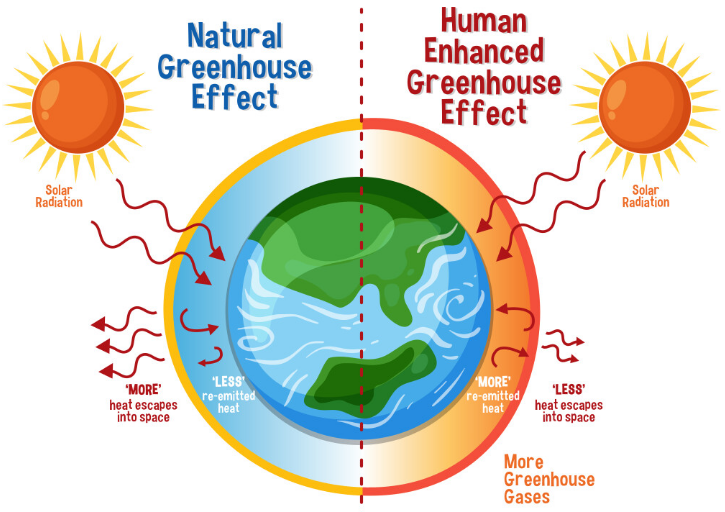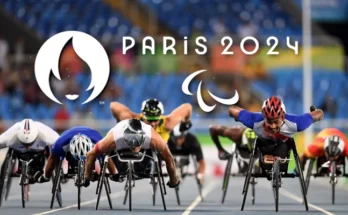Global Warming or Global Heating? Discover the extent of climate change since 1940 and its impact on our planet.
Remember that whole “global warming” thing? Yeah, that’s so last decade. Now it’s all about “global heating” – like cranking the thermostat on planet Earth to max and hoping for the best.
Scientists are basically throwing out synonyms like a dictionary on fire because guess what? The Earth is getting toasty, folks! Scientists used to call it “global warming.” Now, they often call it “global heating” or even “global boiling.”
We’re talking heat waves so intense, they’d make dragons sweat. Extreme weather is becoming the new normal, and it’s not exactly a trend we want in our climate closet.
The interactive map below shows monthly temperature anomalies by country. You can explore this data from 1940 onwards using the time slider below the map.
Source: ECMWF, Ourworldindata, NSIDC, NASA/GSFC
This article will break down the science behind this whole boiling pot situation in a way that’s easier to swallow than burnt toast. Plus, we’ll explore what we can do to turn down the heat before we’re all sweating out our sodium reserves. So, grab a metaphorical fire extinguisher (and maybe a fan), and let’s dive in!
The Paris Agreement was adopted in 2015 by countries around the world. They agreed to limit global warming to “well below 2°C” above pre-industrial temperatures, while trying to keep it to 1.5°C. These targets are based on the rise in the global average temperature. But climate change doesn’t affect all areas of the globe equally. Some regions warm faster than others, impacting local ecosystems, weather patterns, and human communities.
The Enhanced Greenhouse Effect
Imagine the Earth like a giant greenhouse. Sunlight warms the planet, and some of that heat escapes back into space.

But certain gases in the atmosphere, like a giant invisible blanket, trap some of that heat. These are greenhouse gases, and they include gases like carbon dioxide (CO2), methane, and nitrous oxides, mostly from burning fossil fuels.
The more greenhouse gases there are, the thicker the blanket and the more heat gets trapped. This is called the enhanced greenhouse effect.
Because the heat isn’t escaping as easily, Earth’s temperature is rising. That’s what we call global warming, or more recently, global heating. As a result, the temperature of the atmosphere increases.
Evidence of Climate Change
Earth’s climate is like a giant mood swing – things are definitely changing. Scientists have lots of evidence to prove it, and one big clue is the disappearing ice.
Places like Greenland, famous for its massive glaciers, are seeing their icy layers shrink. It’s like a giant ice cube tray slowly melting away. The Arctic, once covered in a vast sheet of sea ice, is also experiencing a major melt-down.
Just how bad is it? Areas like Greenland and the Arctic have seen significant thinning of ice sheets. In September 2020, Arctic sea ice reached its minimum extent for that year at 3.74 million square kilometers. According to scientists at the National Snow and Ice Data Center (NSIDC), this was the second lowest since the 42-year record began.
This shrinking ice isn’t just a cosmetic issue; it’s a major warning sign for the health of our planet.
Supporting Research
- According to a 2019 report by the Intergovernmental Panel on Climate Change (IPCC), “Human activities are estimated to have caused approximately 1.0°C of global warming above pre-industrial levels, with a likely range of 0.8°C to 1.2°C. Global warming is likely to reach 1.5°C between 2030 and 2052 if it continues to increase at the current rate.”
- A 2020 study published in the journal Nature Climate Change states, “The increased frequency and intensity of heatwaves, heavy precipitation, and droughts are attributed to anthropogenic climate change. These events are expected to become more severe and frequent with continued global warming.”
If you enjoyed this article, you might want to check out our articles on Number of Mobile Phone Users in India and also about Screen Time Crisis for Kids Under 16.
Conclusion
The current stage of global warming is an urgent reality that requires immediate and sustained action from individuals, communities, governments, and international organizations. The increasing frequency and intensity of extreme heat events make it essential to reduce their impacts and adapt to changing climate patterns. We need significant reductions in greenhouse gas emissions. The global community must ensure that nations are held accountable for their commitments in climate agreements and foster an environment that supports ambitious emission reduction goals.
Adaptation strategies are crucial for protecting vulnerable communities from the negative effects of rising temperatures. In urban planning, it is vital to prioritize heat-resistant infrastructure, create and maintain green spaces, and promote the use of cool roofs. Early warning systems, healthcare infrastructure, and public health measures can effectively reduce health risks associated with rising temperatures.
The shift from global warming to global heating and to global boiling is a complex research area with many critical aspects that need further study. Researchers should focus on attributing high heat events, understanding the causes and driving factors, and studying climate-feedback mechanisms. They should also examine urban heat islands and their impact on climate patterns, explore ways to reduce urban heat, and study ecosystem responses to increased heat and changing climate conditions. Understanding the health effects of extreme heat and rising temperatures is crucial, especially for vulnerable communities. Continuous monitoring of global greenhouse gas emissions is essential for tracking progress in reducing carbon footprints and developing effective climate policies and mitigation strategies.




